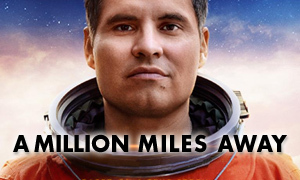Mank: History vs. Hollywood
Gary Oldman
Born: March 21, 1958
Birthplace:
New Cross, London, England, UK
Herman J. Mankiewicz
Born: November 7, 1897
Birthplace: New York City, New York, USA
Death: March 5, 1953, Hollywood, California, USA (uremic poisoning due to kidney failure)
Amanda Seyfried
Born: December 3, 1985
Birthplace:
Allentown, Pennsylvania, USA
Marion Davies
Born: January 3, 1897
Birthplace: Brooklyn, New York, USA
Death: September 22, 1961, Hollywood, California, USA (cancer)
Tom Pelphrey
Born: July 28, 1982
Birthplace:
Howell, New Jersey, USA
Joseph Mankiewicz
Born: February 11, 1909
Birthplace: Wilkes-Barre, Pennsylvania, USA
Death: February 5, 1993, Bedford, New York, USA (heart attack)
Charles Dance
Born: October 10, 1946
Birthplace:
Redditch, Worcestershire, England, UK
William Randolph Hearst
Born: April 29, 1863
Birthplace: San Francisco, California, USA
Death: August 14, 1951, Beverly Hills, California, USA
Arliss Howard
Born: October 18, 1954
Birthplace:
Independence, Missouri, USA
Louis B. Mayer
Born: July 12, 1884
Birthplace: Dymer, Kiev Governorate, Russian Empire
Death: October 29, 1957, Los Angeles, California, USA
Lily Collins
Born: March 18, 1989
Birthplace:
Guildford, Surrey, England, UK
Rita Alexander
Tuppence Middleton
Born: February 21, 1987
Birthplace:
Bristol, England, UK
Sara Mankiewicz
Born: September 7, 1897
Birthplace: Baltimore, Maryland, USA
Death: December 11, 1985, Los Angeles, California, USA
Sam Troughton
Born: March 21, 1977
Birthplace:
UK
John Houseman
Born: September 22, 1902
Birthplace: Bucharest, Romania
Death: October 31, 1988, Malibu, California, USA (spinal cancer)
Tom Burke
Born: June 30, 1981
Birthplace:
Kent, England, UK
Orson Welles
Born: May 6, 1915
Birthplace: Kenosha, Wisconsin, USA
Death: October 10, 1985, Los Angeles, California, USA (heart attack)
Joseph Cross
Born: May 28, 1986
Birthplace:
New Brunswick, New Jersey, USA
Charles Lederer
Born: December 31, 1910
Birthplace: New York City, New York, USA
Death: March 5, 1976, Los Angeles, California, USA
Ferdinand Kingsley
Born: 1988
Birthplace:
Royal Leamington Spa, UK
Irving Thalberg
Born: May 30, 1899
Birthplace: Brooklyn, New York, USA
Death: September 14, 1936, Santa Monica, California, USA (pneumonia)
Bill Nye
Born: November 27, 1955
Birthplace:
Washington, District of Columbia, USA
Upton Sinclair
Born: September 20, 1878
Birthplace: Baltimore, Maryland, USA
Death: November 25, 1968, Bound Brook, New Jersey, USA
When was the screenplay for Citizen Kane written?
The Mank true story confirms that the Citizen Kane screenplay was co-written by Herman J. Mankiewicz and Orson Welles over a span of several months in the spring and summer of 1940. To what degree each man contributed to the screenplay had been a subject of controversy for years.
Who was Herman J. Mankiewicz?
The real Herman Mankiewicz started out as a journalist and playwright in New York and was The New Yorker's first theater critic. As studios in Hollywood were making the switch to sound, they sought out playwrights because of their experience with writing dialogue. Mankiewicz made the cross-country move in 1926 and began to write for the movies, namely Paramount Pictures and MGM.
Did Herman Mankiewicz help to recruit other screenwriters to work for Paramount Pictures?
Yes. The movie finds Mankiewicz sending a telegram to Charles Lederer (Joseph Cross) in 1930, asking him to come write for the studio. The telegram is similar to a real-life telegram Mankiewicz sent to journalist and playwright Ben Hecht. In his 1954 memoir, A Child of the Century, Hecht recalls the wording of the telegram, "Will you accept three hundred dollars to work for Paramount Pictures? All expenses paid. The three hundred is peanuts. Millions are to be grabbed out here and your only competition is idiots. Don’t let this get around."
A character in the movie comments that Mankiewicz was being somewhat frivolous with the telegrams, sending them to "anyone who can rub three words together." However, that doesn't appear to have been the case in real life. From what we can tell, Mankiewicz helped to put together a top-notch group of screenwriters at Paramount. As seen in the film, this included his younger brother Joseph L. Mankiewicz (Tom Pelphrey), whose career surpassed his own during the 1930s. Screenwriter Ben Hecht did later discover that Mankiewicz got him recruited by making a gambler's agreement with Paramount Studio Chief B.P. Schulberg, telling Schulberg that he would tear up his own two-year contract if Hecht couldn't write a hit movie. However, this is more a confirmation of Mankiewicz's confidence in Hecht than it is a sign of frivolity.
Did Louis B. Mayer ask his employees to take a 50 percent pay cut during FDR's week-long bank holiday?
Yes. This actually happened. In order to curtail a run on the banks, President Franklin D. Roosevelt declared a week-long bank holiday from March 6–13, 1933. Like in the movie, a Mank fact check confirms that studio head Louis B. Mayer really did promise he would pay his employees the other half of their pay once the banks reopened. In researching the true story, we discovered that he indeed never made good on his promise (Lion of Hollywood, p. 179).
When did the California gubernatorial campaign of Upton Sinclair take place?
David Fincher's movie attempts to tie two stories together, the 1934 California gubernatorial race between Upton Sinclair and incumbent Frank Merriam, which was a battle between labor and capital, and the film's primary story, the writing of Citizen Kane by co-screenwriter Herman J. Mankiewicz and the movie's director (and co-screenwriter) Orson Welles.
Was Herman Mankiewicz addicted to alcohol and gambling?
Yes. The Mank true story confirms that he was well-known for his harmful behavior, which was often the byproduct of his alcoholism and gambling disorder. His coarse personality indeed cost him jobs and friendships. He found himself unemployed by the summer of 1939, not long before Welles hired him to work on Citizen Kane. The effects of his addictions also took a toll on his marriage and left his wife Sara scrambling to hold things together. In the film, he refers to his wife as "Poor Sara." The nickname appears to come from Richard Meryman's book Mank: The Wit, World, and Life of Herman Mankiewicz in which the author describes someone asking Mankiewicz, "How's Sara?" to which he replies, "Sara who?" "Your wife, Sara." "Oh, you mean Poor Sara."
Did Herman Mankiewicz really lose $1,000 in a coin toss bet?
Yes. According to Ben Hecht's autobiography, this happened in real life. In writing about Mankiewicz's gambling, Hecht said that Mankiewicz tossed a coin in the air with Eddie Cantor, "calling heads or tails for a thousand dollars." In the next sentence, he describes Mankiewicz as losing "constantly."
Was Herman Mankiewicz influenced by Upton Sinclair's run for the governorship of California?
No. The movie's attempt to tie Herman Mankiewicz to Democrat Upton Sinclair's loss in the 1934 California gubernatorial race is almost entirely fictional. Sinclair, who was a well-known author and prominent socialist, ran a campaign that challenged the state's business leaders. He had even written a book outlining his plan, titled I, Governor of California, and How I Ended Poverty: A True Story of the Future. Ultimately, Sinclair lost the race to Republican incumbent Frank Merriam. The movie somewhat downplays the fact that Mankiewicz was an outspoken conservative who staunchly opposed fascism. There's no evidence that he was a supporter of Upton Sinclair, nor does it make much sense that he would have backed him as a candidate.
It's true that Mankiewicz was also anti-union and refused to join the Screen Writers Guild. In speaking of joining the union in the film, he tells his brother Joseph (Tom Pelphrey), "You have nothing to lose but your brains." This dialogue comes almost straight from a full-page ad he took out in Variety opposing the guild (Slate). So, again, it makes little sense that he would sympathize with Upton Sinclair's viewpoints, or be angry for years over Sinclair's election loss. The Mank movie uses this as a fabricated explanation as to why his Citizen Kane script presented such negative characterizations of newspaper magnate William Randolph Hearst and his mistress/actress Marion Davies.
Did Herman J. Mankiewicz save an entire village from fascism?
No. The real Herman Mankiewicz didn't save his nurse Frieda's entire village as the movie implies, but the true story behind Mank reveals that he did spend much of the 1930s helping refugees escape fascism. As Frieda (Monika Gossmann) references in the film, this included German Jews during Hitler's rise to power (Mankiewicz's parents were German Jewish immigrants who emigrated to the United States from Hamburg in 1892). He helped the refugees find work and didn't hold back in giving to relief organizations. In Richard Meryman's Mankiewicz biography Mank: The Wit, World and Life of Herman Mankiewicz, the author states, "Herman became the official sponsor for hundreds of German refugees and took responsibility for total strangers fleeing to America."
In March 1933, the real Herman J. Mankiewicz took time off from MGM to write a screenplay titled The Mad Dog of Europe about Adolf Hitler's rise to power in Germany. Mankiewicz, who was indeed deeply political, wanted to awaken the American public to the dangers of the Nazis and fascism. He was hardly subtle when it came to the screenplay's message, going so far as to name one of his main characters "Adolf Mitler." Unfortunately, the film was never made.
Did Herman Mankiewicz donate to the campaign of Upton Sinclair's rival, Frank Merriam?
Yes. Unlike in the Mank movie, there's no evidence he was unwilling to donate and had to be talked into it by Irving Thalberg as the film implies. Rather, it seems that he made a willing donation in support of Republican Frank Merriam's campaign.
Like in the film, prominent newspaper and studio heads rallied to back Merriam. They viewed Sinclair as someone with communist leanings who must be defeated. It's true that Louis B. Mayer fundraised from his employees. However, in real life, Mayer didn't ask his employees to make a donation. An entire day's salary was deducted from the paychecks of every MGM employee. -LA Times
Did Herman Mankiewicz indirectly influence Irving Thalberg to produce a series of staged newsreels against Upton Sinclair?
No. This is perhaps the movie's biggest deviation from reality. While Irving Thalberg did produce three newsreels that were created to crush Upton Sinclair in his campaign against incumbent Frank Merriam for the governorship of California, an offhand comment by Mankiewicz never gave Thalberg the inspiration to make the faked newsreels. Mankiewicz never made such a comment, which in the film he later regrets. The movie also has him finding out that newspaper magnate William Randolf Hearst helped fund the newsreels. Mankiewicz is broken up when Upton Sinclair loses the election, and the film implies he's distraught over it for years. It becomes the driving force behind him writing Citizen Kane and creating the movie's negative characterization of Hearst. This is complete fiction. -Slate
The movie character Shelly Metcalf (Jamie McShane), who directs the newsreels, is an invented character. In real life, the staged newsreels were directed by Felix Feist Jr. Like Metcalf, he was a test shot director. Unlike Metcalf, there's no indication that he ever had any regrets over making the newsreels, nor did he kill himself because of them. In fact, it was a stepping stone to directing short films, then features, and finally television in the 1950s before his death in 1965. You can view two of the newsreels below, which depict several faked man-on-the-street interviews designed to shed candidate Upton Sinclair in a negative light. -Slate
Did Herman Mankiewicz make a bet with Louis B. Mayer and Irving Thalberg over the election results?
No. Our exploration into Mank's historical accuracy reveals that while Mankiewicz was indeed a compulsive gambler, there's no indication in his biographies that he ever made a bet over the 1934 California gubernatorial election results.
Did Herman Mankiewicz attend parties at Hearst Castle?
Yes. Generally speaking, this is historically accurate. Mankiewicz knew William Randolph Hearst socially and was an occasional guest at the newspaper magnate's lavish castle in San Simeon, which was the inspiration for Xanadu in Citizen Kane. Hearst enjoyed Mankiewicz for his witty banter. It's true that Mankiewicz's drinking eventually made him an unwelcome guest. It's also true that Mankiewicz and Hearst's mistress, Marion Davies, became friends. They bonded over their love of alcohol. However, according to Mankiewicz's wife Sara, it was more because he felt sorry for Davies (Slate).
The last scene at the castle, where Mankiewicz share's an early idea for Citizen Kane, is fictional. Gary Oldman's character tries to incorporate Hearst's malevolent involvement in the 1934 election into his pitch for the movie. Not only is there no record of Mankiewicz making the pitch, we know that the real Mankiewicz wasn't a supporter of Upton Sinclair, nor was he closely tied to the election.
Did Herman Mankiewicz try to stop Irving Thalberg's staged newsreels from being released?
No. In the movie, Mankiewicz (Gary Oldman) approaches Marion Davies during her transition from MGM to Warner Bros. in a desperate attempt to stop Thalberg's faked newsreels from being released. This never happened in real life. For one, Mankiewicz didn't care about the newsreels. Also, the movie rearranges the timeline to make this storyline possible. Marion Davies didn't completely part ways with MGM until January 1, 1935, despite signing her contract with Warner Bros. on October 31, 1934. In real life, the first newsreel was shown in theaters prior to all of that, on October 19, 1934. -Slate
Did Herman Mankiewicz co-write Citizen Kane while convalescing after a car accident?
Yes. The Mank true story confirms that Herman Mankiewicz really did write the script while he was healing after a September 1939 car accident. Mankiewicz had tried to hitch a ride to New York with screenwriter Tommy Phillips, who ran his car off the road after becoming distracted. The accident left Mankiewicz with a broken leg in three places and a lengthy and painful healing process, much of which took place at a ranch in Victorville, California after Orson Welles recruited him to collaborate on the Citizen Kane script. Joining the two men were Welle's former Mercury Theater ally John Houseman, a German nurse to look after Mankiewicz's leg, and a secretary named Rita Alexander.
The scenario at the ranch seems to be depicted fairly accurately, aside from the fact that the secretary's real-life husband was a recently-immigrated European refugee, not an RAF pilot. The change was made to provide more conflict/drama with Mankiewicz, an isolationist. Also, David Fincher's movie finds Welles sending Houseman to a hotel so that Mankiewicz can concentrate. However, that never happened in real life. Mankiewicz and Houseman shared a two-bedroom suite at the ranch. -Slate
Who actually wrote the Citizen Kane screenplay, Herman Mankiewicz, Orson Welles, or both?
What we know for a fact is that Herman Mankiewicz signed a contract giving up any claim of being a writer on the movie. We also know that he later wanted credit, and after arguing with a then-25-year-old Orson Welles, the director eventually gave in and attributed to him a screen credit.
As to who actually wrote the movie, that's been a subject of debate for decades. Pauline Kael's 1971 New Yorker article "Raising Kane" claimed that Orson Welles didn't write a single line of the shooting script. For the article, she interviewed John Houseman and the secretary, Rita Alexander. However, Peter Bogdanovich interviewed Orson Welles for the 1972 Esquire article "The Kane Mutiny." The article was a rebuttal to Kael's New Yorker piece. In it, Welles claimed there were two first drafts, one written by him and one written by Mankiewicz. He said that he merged them together to get the final product, keeping what he liked from his own and including what he liked from Mankiewicz's.
The version of the story that's most widely accepted today is the one presented in Robert L. Carringer's 1978 article "The Scripts of Citizen Kane" in which he analyzed surviving drafts of the screenplay. What he concluded was that Herman Mankiewicz was the main author of the drafts produced at the Victorville ranch, but Welle's revisions and additions were pivotal in producing the finished screenplay. Welles even created key scenes from scratch. Essentially, Mankiewicz provided a solid foundation for a story and Welles transformed it into an authentic blueprint for a masterpiece. Carringer found more evidence of Welle's involvement when he discovered a telegram that Houseman sent to Mankiewicz in June 1940. The telegram clearly indicates that Welles played a major role in the development of the finished script (Slate). It also reveals that Houseman was writing parts as well, but it's unclear if any of his work was used.
David Fincher, working from a script written by his late father, Jack Fincher, takes a more anti-Welles approach, sticking closely to and even surpassing the version presented in Pauline Kael's New Yorker article. While it might be the version that lends itself to the most drama, it's likely the least accurate. Fincher's version diminishes Welle's contributions. We don't see any of the preliminary meetings between Welles and Mankiewicz that took place prior to Victorville, which produced 300 pages of notes. Fincher only shows a growing pile of notebooks next to Mankiewicz's bed that seems to have materialized from nothing.
Did Orson Welles offer Herman Mankiewicz $10,000 to remove his name from the authorship of the screenplay?
This was a rumor that Pauline Kael heard and included in her 1971 New Yorker article "Raising Kane." Likely for the sake of drama, Fincher embraces it and includes it in his film, despite Welles having always denied it. The movie depicts Welles (Tom Burke) getting so upset over the fact that Mankiewicz wants credit, he angrily hurls furniture across the room. Welles' actions inspire Mankiewicz to write the Citizen Kane scene where Kane destroys Susan Alexander's room. It's true that one of Welle's unhinged moments inspired the scene, but it happened months before any discussions between Welles and Mankiewicz regarding screen credit. It was inspired by an incident when Welles threw lit food-heating cans at John Houseman.
Did Marion Davies visit Herman Mankiewicz to try and convince him to stop Citizen Kane's release?
Not likely. There's no mention of this in her memoir The Times We Had: Life With William Randolph Hearst. In fact, she states that she never even watched Citizen Kane when it was released. At best, this seems to be an exaggeration of the fact that the script found its way to Hearst and his lawyers via Marion Davies' nephew Charles Lederer.
How did Herman Mankiewicz die?
As stated in the Mank movie, he died 11 years after winning an Oscar for writing Citizen Kane. His exact cause of death was uremic poisoning due to kidney failure from alcoholism.
When did director David Fincher's father write the screenplay for Mank?
The Mank real story reveals that Howard "Jack" Fincher, a former journalist and LIFE Magazine San Francisco bureau chief, wrote the screenplay for Mank in the 1990s. His son David had tried to get the project off the ground even prior to his death in 2003. Yet, the film never got past the early pre-production planning level until 2019.
Overall, how accurate is Mank?
We've awarded Mank a reality score of 5.5/10. While the movie gets many of the broader details correct, the film's attempt to tie the 1934 California gubernatorial campaign of Upton Sinclair to Herman Mankiewicz appears to be entirely fictional. In the movie, Mankiewicz harbors deep wounds over Upton Sinclair's election loss. The film uses William Randolph Hearst's funding of staged newsreels that discredited Sinclair as motivation for Mankiewicz's unsavory characterization of Hearst in his Citizen Kane screenplay. Yet, there's no historical evidence to suggest this was the reason Mankiewicz and co-screenwriter Orson Welles turned Kane into a negative characterization of Hearst.
The movie's depiction of who wrote Citizen Kane also deviates from what has been commonly accepted as the truth. Fincher's film takes an anti-Welles approach, giving practically all of the screenplay credit to Mankiewicz, while ignoring and leaving out details that point to Welles' significant contribution.
"You cannot capture a man's entire life in two hours. All you can hope is to leave the impression of one," Mankiewicz (Gary Oldman) says of his Hearst-like character Charles Foster Kane. Fincher's Mank does a better job at doing the latter, leaving a well-crafted impression of Mankiewicz, but in order to do so, it injects a noticeable amount of fiction into the historical record.
1934 California Election Attack Ads & Related Videos
Deepend your understanding of the true story behind Mank by watching the original 1934 staged newsreels attacking California gubernatorial candidate Upton Sinclair. Then check out the Citizen Kane and Mank movie trailers.
Link-to-Learn More:







